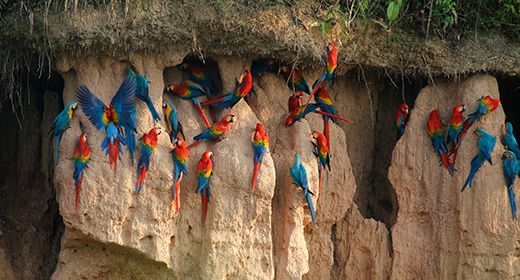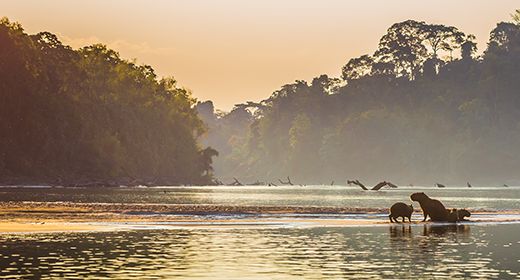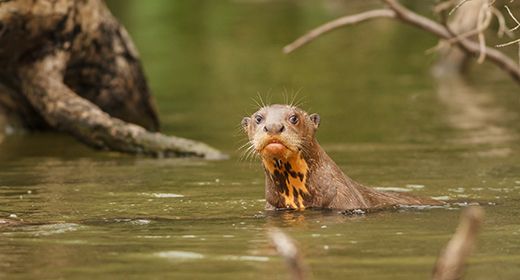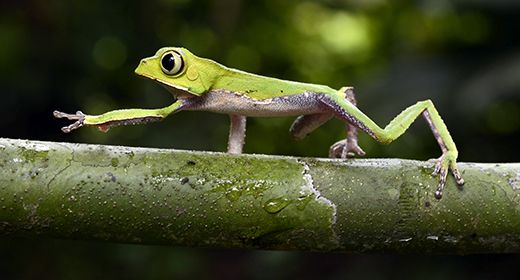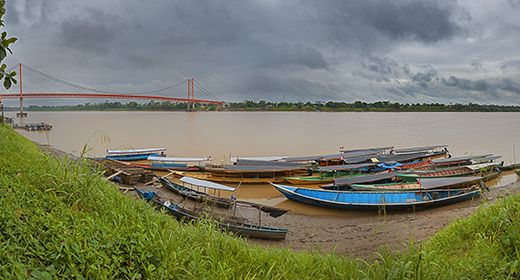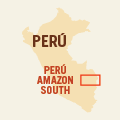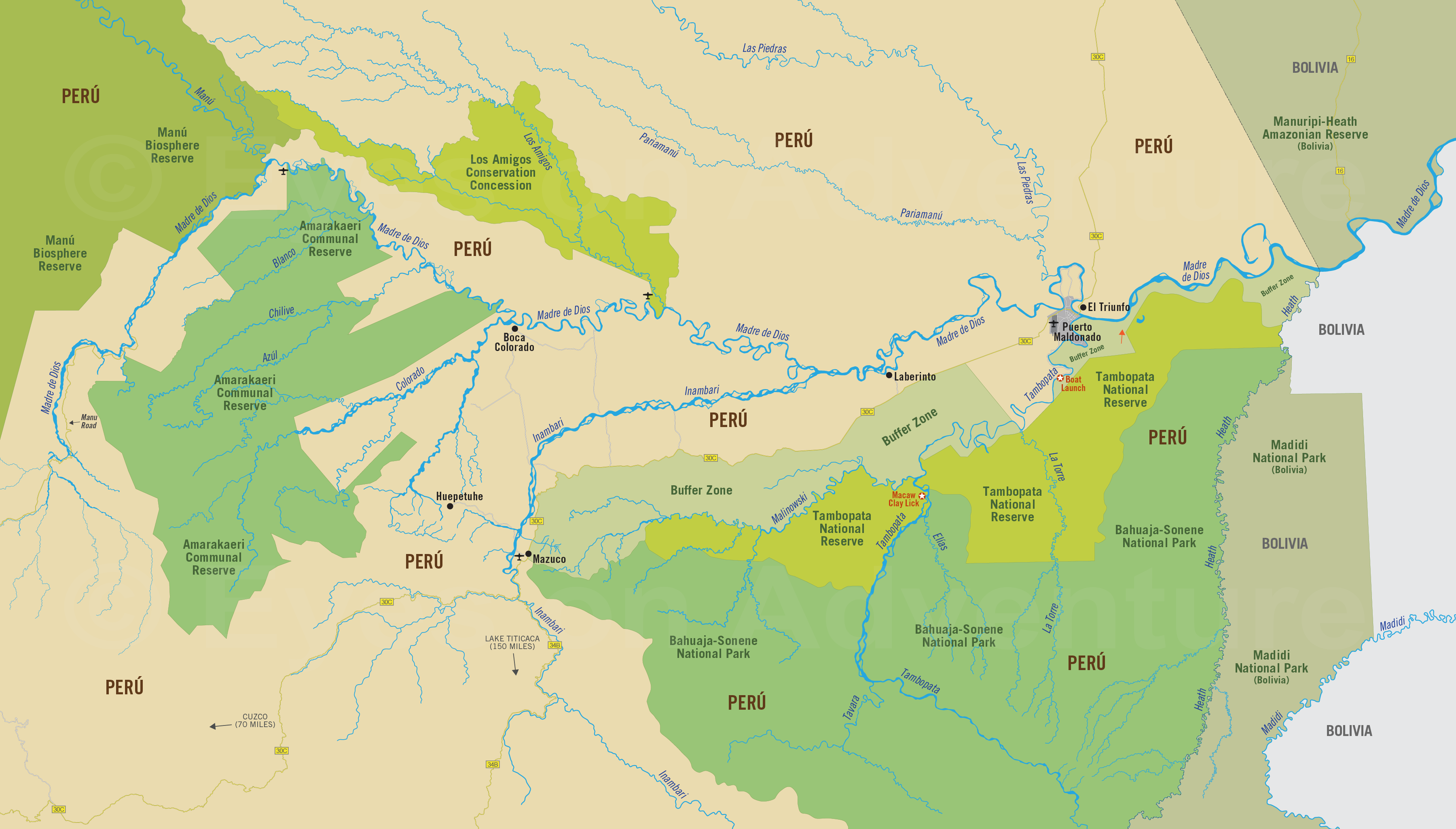Perú Amazon South
Region Links: Perú Amazon North, Perú Amazon South, Sacred Valley
Highlights
- A variety of excellent jungle lodges.
- Superb wildlife and birding on foot and the river.
- Extremely high level of biodiversity.
- Tambopata National Reserve.
- Manu National Park.
EOA Recommends: Inkaterra Reserva Amazónica, Manu Birding Lodge, Refugio Amazonas, Tambopata Research Center
Peru's Southern Amazon offers an incredible wildlife experience in protected national parks and reserves, particularly for those who enjoy seeing the jungle's abundant and diverse birds!
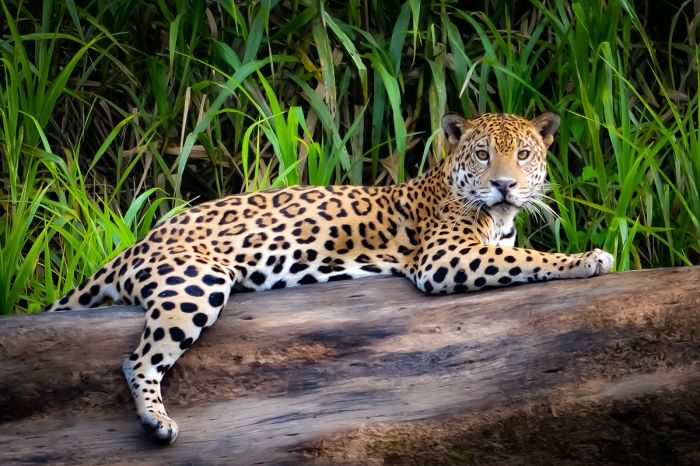
A jaguar along the Tambopata River, southern Peruvian Amazon.
The Amazon
Well over half of Peru is covered by the western portion of the Amazon rainforest, one of the world's greatest tropical jungles. The Amazon covers roughly 2.7 million square miles, the majority of which is in Brazil (58.4%), but it also extends west into Peru (12.8%), Bolivia (7.7%), Columbia (7.1%), Venezuela (6.1%), Guyana (3.1%), Suriname (2.5%), French Guiana (1.3%) and Ecuador (1%).
The jungle is home to an estimated 350 native ethnic groups and is the largest and most biodiverse tract of tropical rainforest in the world. Large-scale deforestation threatens this magnificent gem of biodiversity.
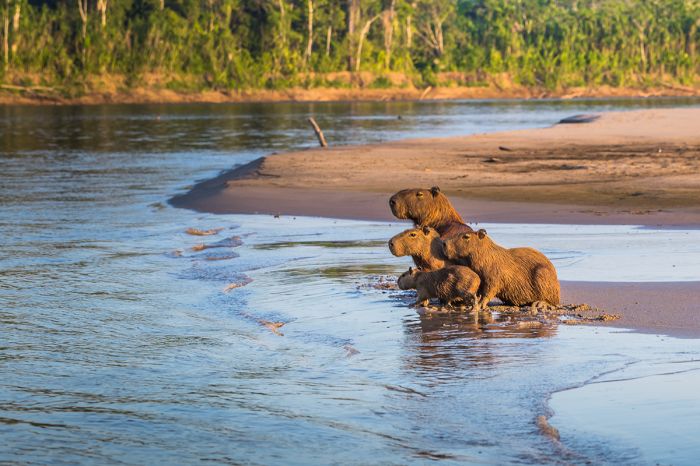
Capybaras on the bank of the Madre de Dios River in Manu National Park.
The Amazon is a must-see for nature lovers and Peru has a good number of jungle-based lodges that offer opportunities to see some of its wildlife, including jaguars, caimans, tapirs, capybaras, giant anteaters, otters, huge anacondas, sloths, and an abundance of primates. Birding in the Peruvian Amazon is outstanding and almost any lodge or camp offers expert birding guides.
Visitors will also likely see indigenous people that live in small villages along the waterways and still survive in traditional ways by hunting and fishing.
There are two distinct Amazonian destinations in Peru, one in the southeast just east of Cusco, and the other, a much larger section of rainforest in the far northeast.
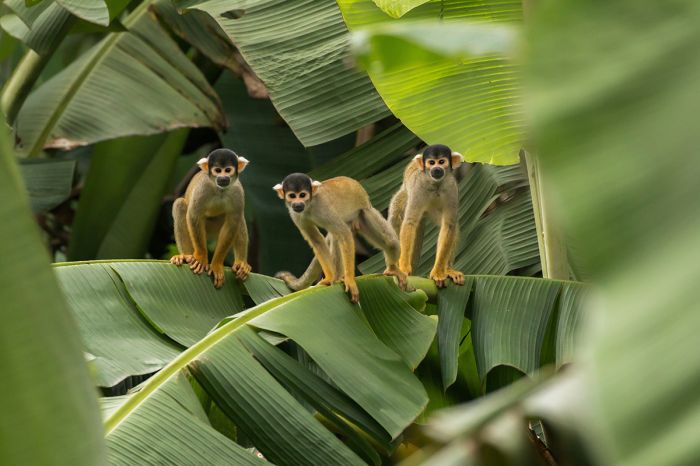
A group of Ecuadorian squirrel monkeys (Saimiri cassiquiarensis macrodon) in Tambopata.
SOUTHERN AMAZON
Peru's southern Amazon is also known as Madre de Dios, named for the wide river which flows though heart of the southern selva (jungle in Spanish). The small, frontier, river town of Puerto Maldonado is where all visits to the southern selva begin. The town is a 90-minute flight from Cusco, so it makes sense to join these tow destinations on your travel itinerary. Wildlife and birding are the main attractions in the southern selva and there are lodges offering incredible experiences on both boat and on foot.
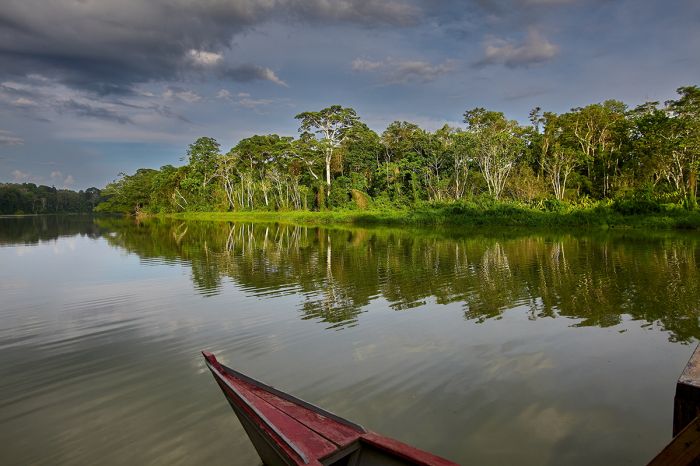
Lake Sandoval in Tambopata National Reserve.
The Manú Biosphere Reserve protects 7 700 square miles of virgin forest (both cloud forest and rainforest) and is divided into three zones as follows. Zone A is the core zone (covering 80%) and is a national park (Manu National Park) with strict regulations and only accessible to tourists on organized visits with a licensed guide).
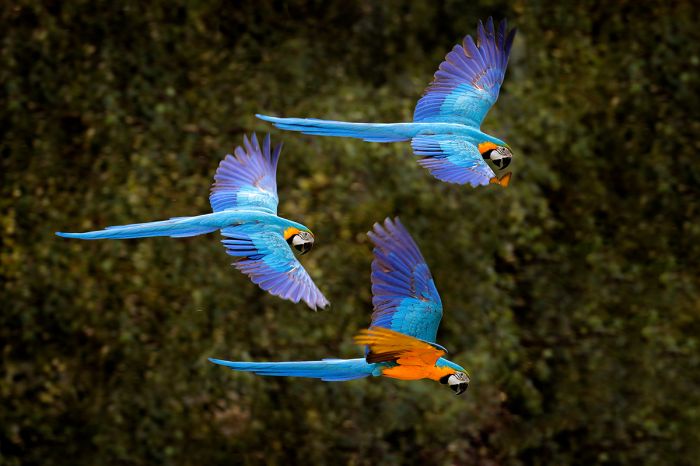
Blue-and-yellow macaws (Ara ararauna) in Manu National Park, Peru.
Zone A has no permanent residents beyond some virtually unknown indigenous groups, the park guards, some researchers, and the wildlife. Zone B is a buffer zone (covering 10%) and is used for both research and tourism, with several excellent lodges. Zone C is a transitional zone (covering 10%) with some human settlement and some tourist lodges.
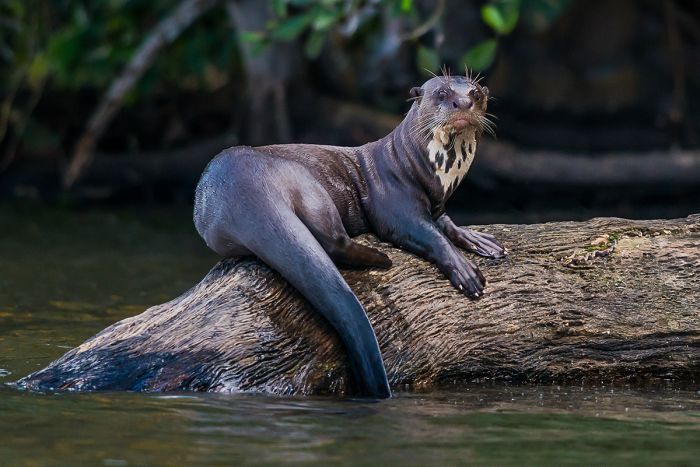
A giant otter (Pteronura brasiliensis) on the Madre de Dios River.
The other option in the southern Amazon is Tambopata National Reserve, which covers 1 061 square miles of pristine rainforest and has a variety of excellent tourist lodges to choose from. Access to the lodges in Tambopata, which are mostly situated along the Tambopata River, is by boat from Puerto Maldonado. The lodges in Tambopata offer outstanding wildlife experiences with expert guides, many of whom grew up in the forest.
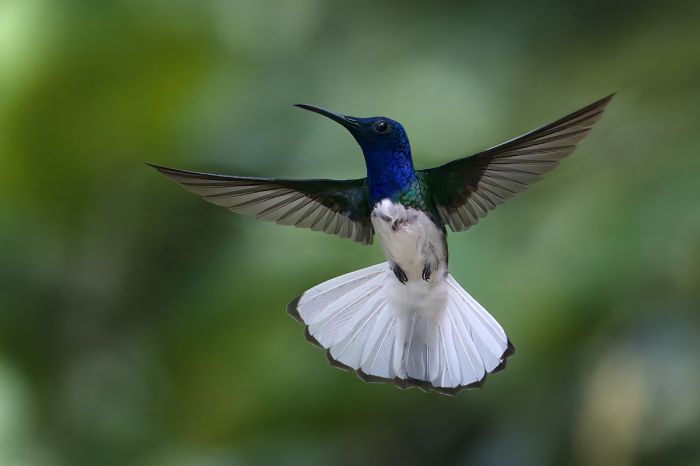
A male white-necked Jacobin (Florisuga mellivora) seen in Manu National Park, Peru.
To the south of Tambopata lies the massive Bahuaja-Sonene National Park, which covers 4 214 square miles and extends to Bolivian border to the east, where it adjoins to that country's Madidi National Park. The combined parks and reserves in this section of the Amazon are one of the largest protected areas in the world and certainly one of, if not the most, biodiverse areas on Earth.
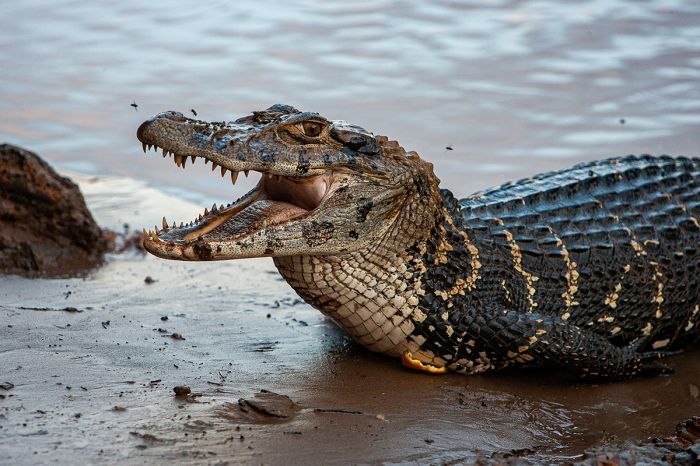
The black caiman (Melanosuchus niger) is common in the southern Peruvian Amazon.




